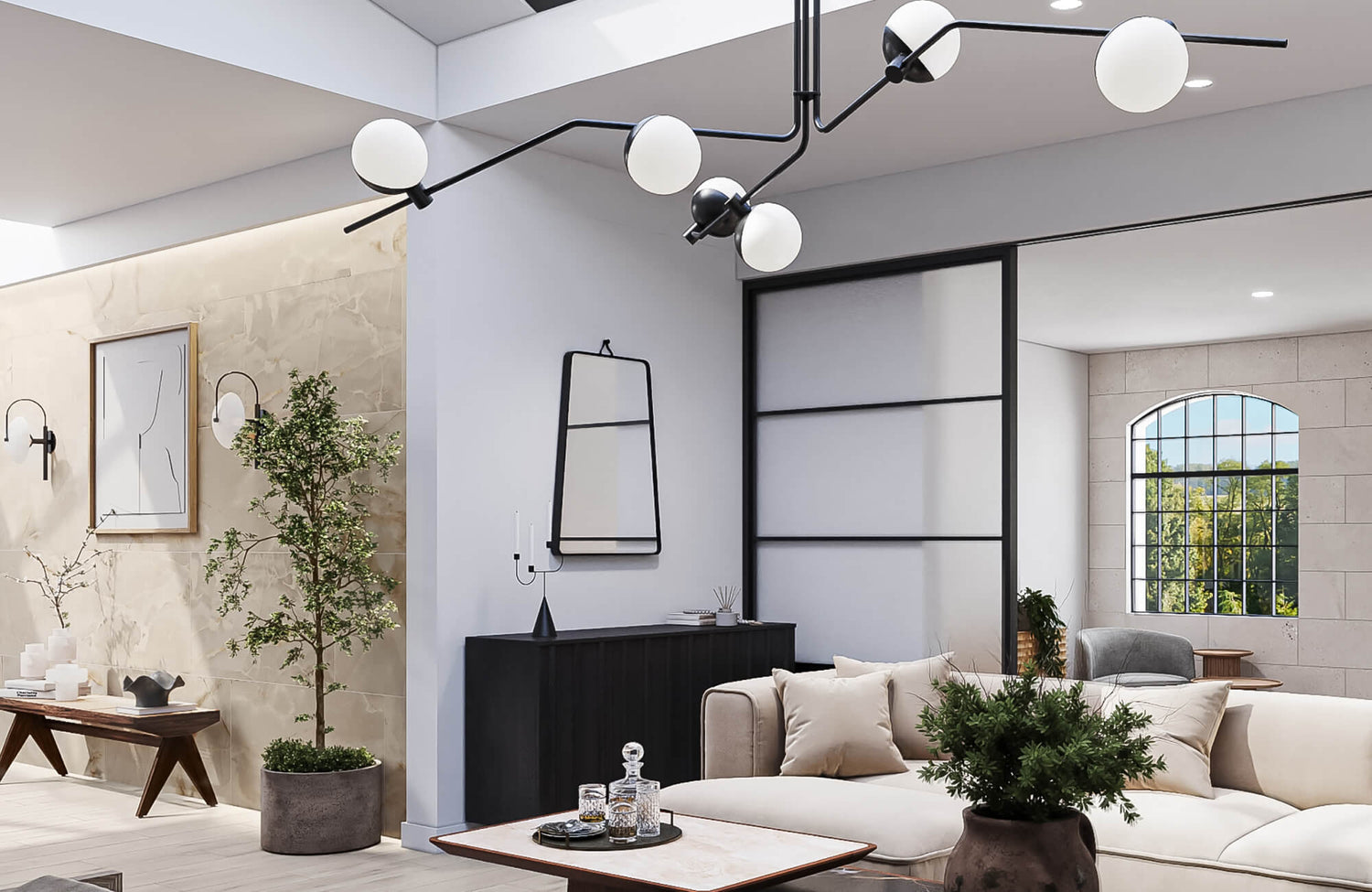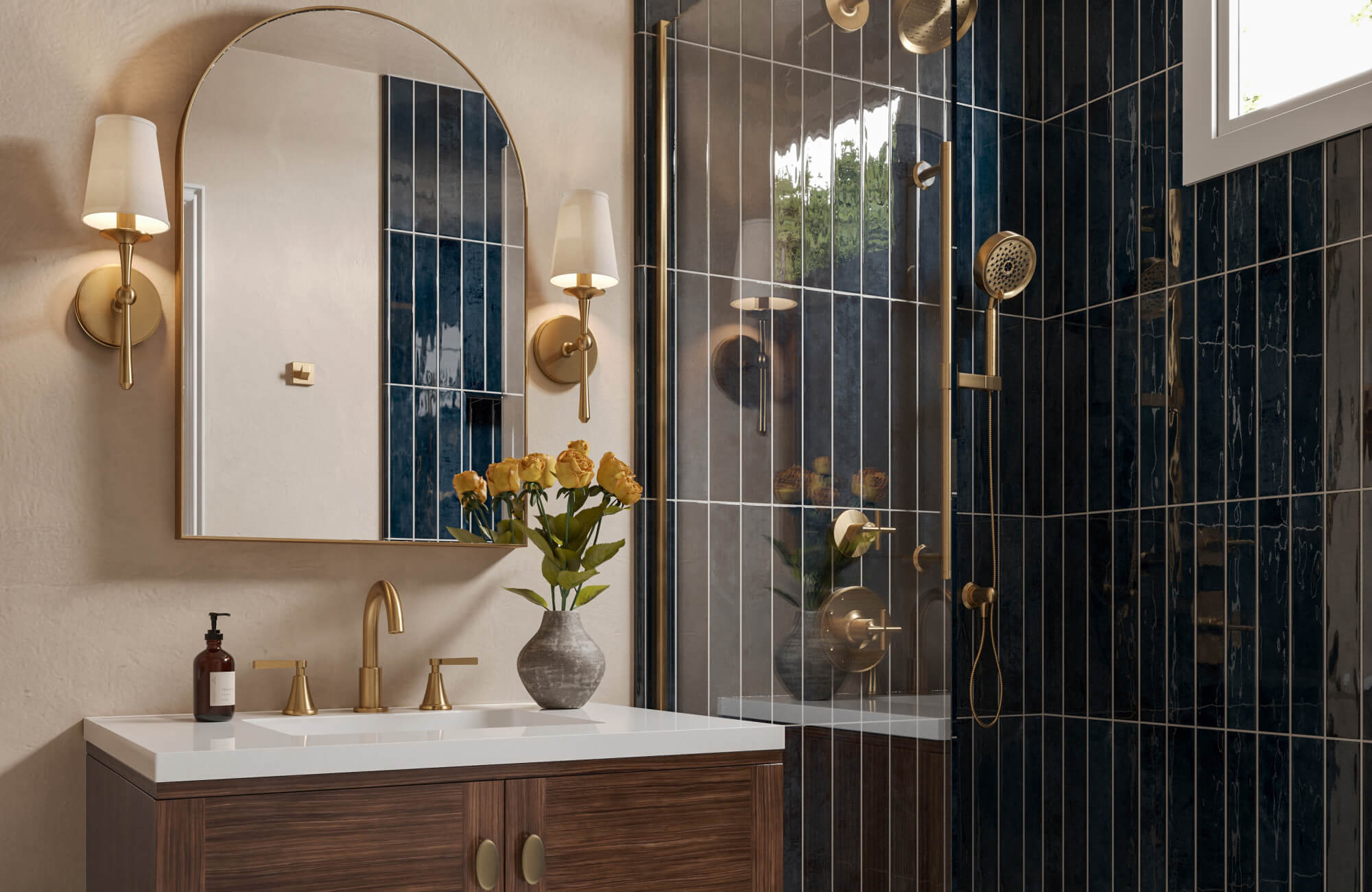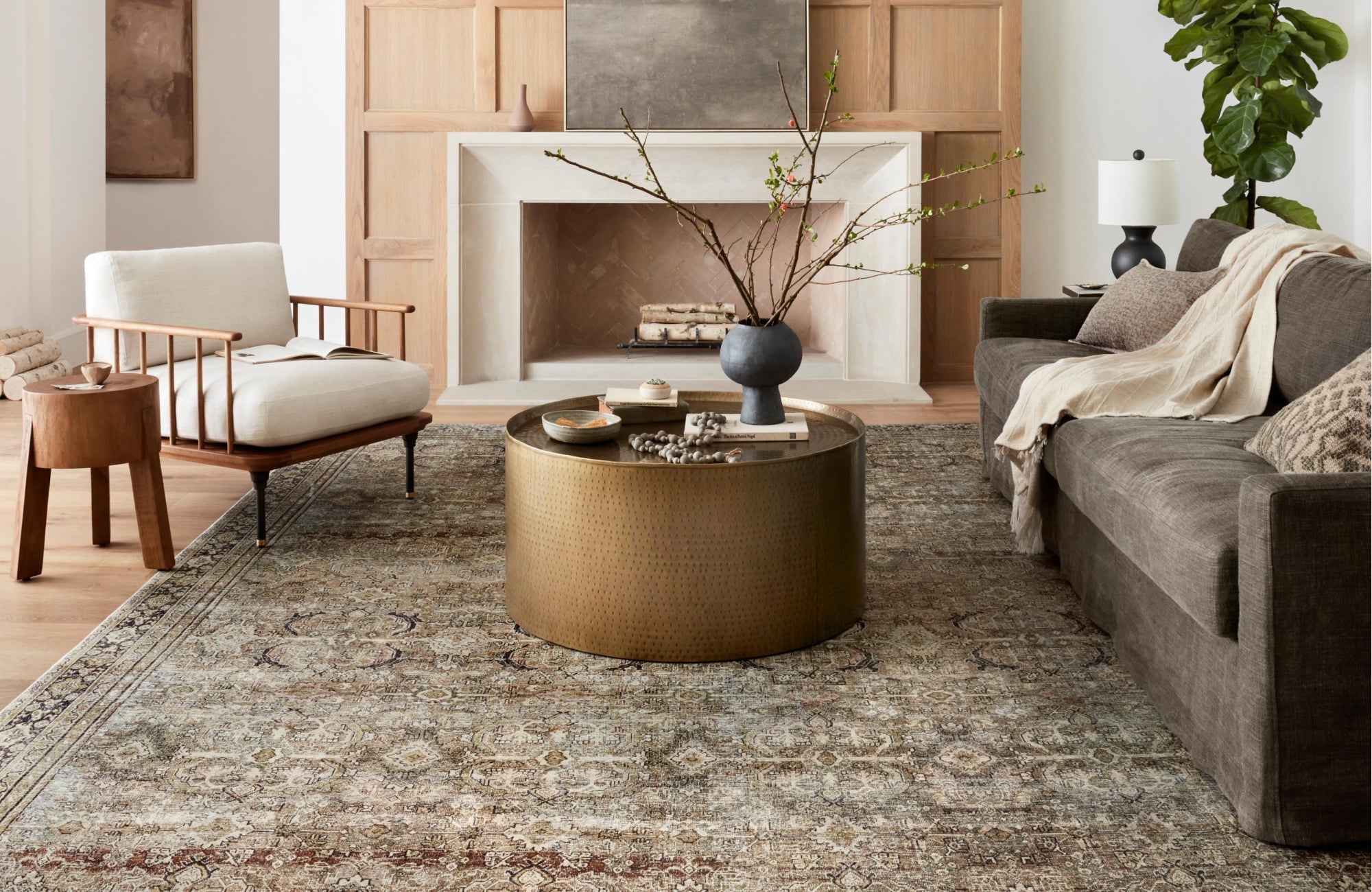Light transforms space. It defines character, sets mood, enhances color, and influences how we experience every corner of our home. From the soft glow that invites relaxation in a bedroom to the crisp brilliance that energizes a kitchen, the right lighting design turns interiors into living expressions of function and beauty. Choosing the best lights for your home involves a delicate blend of artistry and engineering—one that balances ambient warmth, task efficiency, and accent drama with energy-efficient innovation and smart home integration.
Whether you're illuminating a cozy reading nook or layering light in a modern open-plan living space, this guide offers a comprehensive roadmap to mastering residential lighting. With a focus on high-performance LED technology, color temperature precision, and tailored room-by-room lighting strategies, you'll uncover how to create luminous harmony that elevates both form and function. Let this curated lighting guide inspire informed decisions, where every bulb, beam angle, and color rendering index (CRI) brings your space to life.

Understanding Lighting Types
Each room in a home benefits from a distinct blend of lighting types. Differentiating between ambient, task, and accent lighting ensures that functionality aligns with visual appeal and spatial intention.
Ambient Lighting
Ambient lighting provides the foundational layer that mimics natural daylight and establishes baseline visibility. It’s typically delivered through ceiling-mounted fixtures, chandeliers, recessed lights, or flush-mount ceiling lights, offering broad coverage across a room. This even light distribution eliminates harsh shadows and ensures uniform brightness throughout the space. To achieve effective coverage, it’s important to choose fixtures with high lumen output that can fill larger areas appropriately. Additionally, consider dimmable LEDs, which allow the brightness to be adapted throughout the day based on need and mood. When paired with smart controls, ambient lighting gains enhanced flexibility and supports efficient energy management.
Task Lighting
Task lighting zeroes in on functional zones where detailed work is done, such as kitchen counters, desks, or vanity mirrors. It offers concentrated illumination designed to reduce eye strain and increase accuracy, making it essential for high-focus activities. Common options include gooseneck lamps, under-cabinet LED strips, pendant lights, and track lighting, each suited to specific applications. To ensure optimal performance, beam angle and placement are critical—light should hit the workspace without casting shadows. For this reason, fixtures should be positioned perpendicular to the working surface to avoid glare and maintain visual comfort.
In kitchen settings, pendant lights are a popular choice for delivering focused light to islands and prep areas. Edward Martin’s Phineas Pendant in Historic Bronze, as displayed in the picture, is a stylish and functional solution that pairs well with classic or transitional interiors. With its dome-shaped design and warm metal finish, it enhances visual appeal while offering directional lighting right where it’s needed. (Note: This fixture is sold without a bulb, giving you the flexibility to select your preferred brightness and color temperature separately.)
A cooler color temperature (3500K–4500K) is often ideal for clarity and visual sharpness in task zones. Integrating task lighting with ambient layers also ensures practical yet comfortable environments tailored to each room’s needs.
Accent Lighting
Accent lighting introduces depth and drama by drawing attention to architectural elements, artwork, or decorative displays. Operating at a lower intensity than ambient or task lighting, it nonetheless plays a powerful role in establishing visual hierarchy within a space. To achieve this effect, spotlights, picture lights, and directional track heads are commonly used as tools for accentuation.
Placement is especially important. Lights should be angled at 30 degrees to avoid glare and unwanted shadows on the focal object. To further enhance the mood, consider dim-to-warm technology, which helps evoke a gallery-style ambiance. Additionally, placing accent lighting in niches, alcoves, and shelving adds subtle layers that enrich the visual composition. In doing so, this type of lighting enhances texture and dimension, contributing significantly to the home’s overall character.
Lumen Output and Color Temperature
Lumen output and color temperature determine how bright a space feels and how colors are perceived. These metrics are essential for achieving comfort, visual efficiency, and ambiance in each room.
Lumen Output
Lumens measure how much light a fixture produces and are a more accurate guide than wattage when choosing brightness. Selecting the right output ensures each space feels balanced and functional. Kitchens typically need 5,000–8,000 lumens for visibility, while living rooms benefit from 1,500–3,000 lumens to create a relaxed atmosphere. Bedrooms, dining areas, and hallways generally require lower levels for comfort and ambiance. Using multiple fixtures also helps distribute light evenly and reduce glare. Dimmable options offer added flexibility, letting you adjust brightness throughout the day. Always match lumen levels to the room’s size and intended use for optimal lighting.
Color Temperature
Color temperature, measured in Kelvins, shapes how warm or cool a light appears and directly influences mood and visual comfort. Warm white (2700K–3000K) creates a cozy, inviting atmosphere, ideal for bedrooms and living areas. In contrast, neutral white (3500K–4100K) offers a balanced tone suited for kitchens and bathrooms, enhancing contrast without appearing too clinical. For workspaces or utility areas, cool white (5000K–6500K) mimics daylight, making it effective for tasks that require clarity. However, choosing the wrong color temperature can distort a room’s design or hinder task performance. To maintain visual harmony across connected spaces, it’s best to select fixtures that offer consistent temperature. Many LED bulbs now provide multiple color temperature options in a single product, offering valuable flexibility in design.

Energy Efficiency and Lighting Technologies
Modern lighting technologies prioritize performance and sustainability. Understanding the types of light sources and their energy profiles helps in making long-term, cost-effective choices.
LED Lighting
LEDs (Light Emitting Diodes) are the most efficient and versatile lighting option for residential use. They consume up to 80% less energy than incandescent bulbs while delivering equal or greater brightness, making them a smart choice for both performance and sustainability. Their long operational life, often exceeding 25,000 hours, significantly reduces maintenance and replacement costs over time.
Adding to their appeal, LED lights are available in a wide range of formats, including A19 bulbs, strips, downlights, and integrated fixtures, providing flexibility for nearly any application. High-efficiency models further stand out with efficacy ratings over 100 lumens per watt, maximizing output while minimizing energy use. Most LEDs are also compatible with dimmers and smart controls, allowing for enhanced convenience and customization. For added assurance, choose Energy Star-certified products to ensure safety, quality, and long-term reliability.
For those seeking both energy efficiency and visual sophistication, decorative fixtures like the Shalya Pendant in Vintage Gold Leaf, as depicted in the image above, pair beautifully with high-performance LED bulbs. This sculptural pendant blends artistry with utility. Its woven form and warm finish also provide an elegant focal point, while its LED compatibility ensures lasting, sustainable illumination.
CFL and Halogen
Compact Fluorescent Lamps (CFLs) and halogens offer improvements over traditional incandescents but lag behind LEDs in several areas. CFLs are energy-efficient and affordable but contain mercury, which requires careful disposal and environmental consideration. Halogen bulbs deliver better color rendering and brightness than CFLs, yet they run hot and have shorter lifespans, making them less ideal for long-term use.
Despite their limitations, these bulbs can serve as transitional options during retrofits or in cases where budget constraints apply. However, it’s important to note that their compatibility with dimmers and smart controls is limited, which may restrict functionality. In the long run, switching to LEDs offers greater energy savings, improved versatility, and a lower environmental impact. Always evaluate the total cost of ownership, factoring in purchase price, energy use, and lifespan, before selecting non-LED alternatives.
Color Rendering Index (CRI) and Light Quality
CRI influences how accurately light reveals the colors of objects in a room. It’s essential for visual clarity, especially in areas where color perception is critical, as even subtle shifts in CRI can change how a room feels and functions.
What CRI Measures and Why It Matters
CRI (Color Rendering Index) is a scale from 0 to 100 that indicates how faithfully a light source replicates true colors compared to natural light. In residential applications, a CRI of 80+ is generally acceptable, providing sufficient color accuracy for everyday use. However, for areas where precise color differentiation is essential, such as kitchens, bathrooms, and wardrobes, a CRI of 90+ is recommended.
High CRI lighting also reduces distortion of skin tones, clothing, food, and artwork, enhancing both functionality and aesthetics. To achieve this, LEDs with high CRI often incorporate phosphor coatings that improve rendering quality. In contrast, low-CRI environments can cause colors to appear dull or off-hue, which in turn diminishes the visual appeal and comfort of the space.
Applications That Demand High CRI
Certain residential spaces benefit disproportionately from high CRI lighting, as accurate color rendering plays a crucial role in both function and aesthetics. In kitchens, for instance, precise color differentiation supports both cooking accuracy and the visual appeal of food presentation. Similarly, in dressing rooms, high CRI ensures a true reflection of clothing colors and makeup application, enhancing daily routines. Art display areas also demand high-fidelity lighting to preserve the integrity of hues and textures.
Beyond interiors, even outdoor spaces such as patios or entryways gain from higher CRI, improving both security and curb appeal. Additionally, high CRI lighting can enhance resale value by elevating the perceived quality of finishes and materials throughout the home. For any space where appearance and detail matter, prioritizing CRI is essential to achieving the desired visual outcome.

Room-by-Room Lighting Strategies
Each room has unique requirements based on its function, size, and design. A tailored lighting strategy enhances usability, comfort, and design cohesion.
Living Rooms and Common Areas
Living rooms need adaptable lighting that supports a variety of activities—reading, relaxing, entertaining, and watching TV. To achieve this versatility, combine ceiling-mounted ambient lighting with adjustable floor lamps and wall sconces. For general illumination, use dimmable LED downlights that allow lighting levels to be adjusted based on the time of day or activity.
Decorative fixtures can be added to introduce focal interest and elevate the room’s aesthetic. For functional zones, position task lights near reading areas or desks to provide targeted brightness where it’s needed most. Accent lighting can further enhance the space by highlighting shelves, fireplaces, or artwork. To maintain a cohesive atmosphere, consider using layered circuits or smart zones for mood control. Finally, ensure that lighting transitions smoothly into adjacent open spaces, promoting a sense of visual continuity throughout the home.
Kitchens and Dining Areas
Kitchens demand a high degree of functional lighting for cooking and prep work, making thoughtful illumination essential. Start with bright, neutral ambient lighting using recessed LED fixtures or flush-mounts to ensure clear, even visibility. Under-cabinet LED strips further enhance task zones by eliminating shadows and increasing clarity on countertops. Pendant lights above islands not only provide focused illumination but also serve as key design elements that tie the space together.
A standout option, as displayed in the photo above, is our Carly 34" Pendant in Vintage Brass, which is designed to bring bold visual impact and practical light to kitchen islands or dining spaces. Its layered dome design and rich finish make it both a functional and decorative centerpiece. Pairing Carly with a high-CRI, neutral white LED bulb ensures clean, downward illumination that minimizes shadows, making it ideal for food prep and entertaining alike.
To easily shift from bright task lighting to a softer ambiance for dining, install dimmers and consider warm-toned lighting for added comfort. Adjustable-height pendants also offer flexibility, helping tailor the light to your space and occasion.
If you're unsure where to begin or want help refining your vision, our design specialists are here to guide you. From concept to installation, Edward Martin offers personalized lighting solutions that balance beauty, functionality, and energy efficiency across every space in your home.
Bathrooms, Bedrooms, and Transitional Spaces
Bathrooms require moisture-resistant fixtures with high CRI and moderate Kelvin temperatures to support grooming tasks with clarity and accuracy. For facial illumination, vertical vanity lights are preferable, as they reduce shadows more effectively than overhead fixtures. In bedrooms, a layered lighting approach works best, combining ambient ceiling lights, reading sconces, and concealed cove lighting to cater to different needs and moods. To promote relaxation and support better sleep hygiene, opt for warmer color temperatures.
Meanwhile, hallways and staircases demand consistent, glare-free lighting to ensure visibility and safety at all times. For added convenience and energy efficiency in these transitional areas, consider incorporating motion-sensor lights. To unify the overall aesthetic, use matching finishes and maintain consistent color temperatures across connected zones, promoting visual harmony throughout the home.
For safety and proper performance, it's always best to have lighting installed by a licensed professional, especially for hardwired fixtures or complex smart systems.
Smart Controls and Automation Systems
Lighting does more than brighten a space; it can now think, respond, and adapt to your lifestyle. By integrating smart controls, you unlock a new level of convenience, energy efficiency, and personalization. From automatic schedules to voice commands and app-based settings, modern systems make it easy to tailor your lighting to every moment and mood.
Dimmers, Switches, and Zoning
Dimmers provide fine-tuned control over brightness levels, extending bulb life and saving energy in the process. When selecting dimmers, be sure to choose switches compatible with your bulb type, particularly when using LEDs. In addition to dimming, zoning allows different lighting groups in the same space to be controlled independently, offering greater flexibility. This segmentation is especially ideal for open-plan areas or multifunctional rooms.
Multi-scene setups further enhance convenience by enabling instant switching between activities like dining, reading, or entertaining. Depending on your aesthetic preferences and needs, consider rotary, slide, or digital dimmers. For retrofits, wireless dimmer modules provide added flexibility. As a final step, always verify load capacity and wiring requirements with a technician to ensure safe and effective installation.
Hands-Free and Hassle-Free Illumination
Smart lighting reaches its full potential when voice commands, mobile apps, sensors, and timers work in harmony. Voice assistants like Alexa, Google Assistant, and Siri offer hands-free convenience, while mobile apps provide remote access, scheduling, and customization through presets and geofencing. In addition, occupancy and daylight sensors adjust lighting automatically based on movement or ambient light, reducing energy waste in frequently used spaces.
Timers bring further convenience by managing lights on a set schedule, especially useful for outdoor zones or when you're away. These systems can be fine-tuned to match your preferences, with adjustable sensitivity and delay settings. When connected through a smart hub, they come together to create a cohesive, intuitive lighting environment that enhances comfort, control, and efficiency across your home.
Illuminate Your Home with Intention and Expertise
Choosing the perfect lights for your home is both a technical decision and a creative endeavor—one that blends illumination science with lifestyle aesthetics. By understanding key principles like lumen output, color temperature, CRI, and lighting layers, you can curate a lighting scheme that aligns with each room’s purpose and mood. Embrace energy-efficient technologies such as LED and smart systems to enhance comfort, control, and sustainability. Whether you're highlighting architectural features with accent lights or designing a serene bedroom sanctuary with warm ambient tones, let every fixture be a conscious choice that reflects your needs, enhances your environment, and brings beauty to your everyday living.
For expert guidance on your home lighting project, trust Edward Martin to deliver tailored solutions with lasting impact. Contact us to begin crafting a lighting plan that enhances every space with intention and style!










